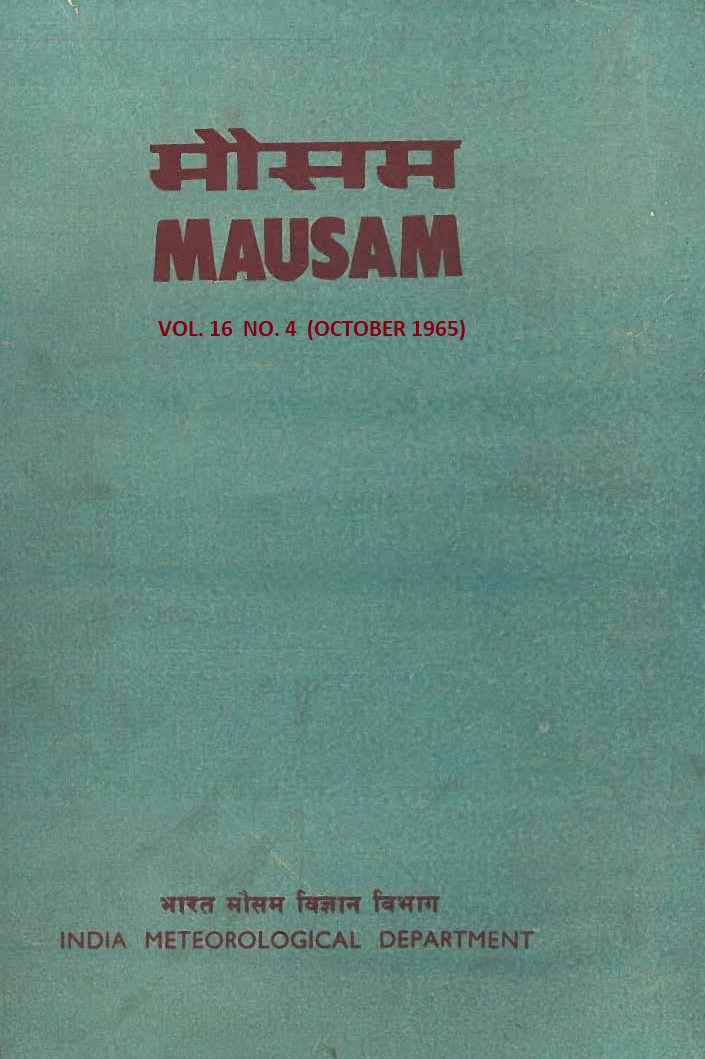Methods of measuring winds and temperatures in the upper atmosphere with small rockets
DOI:
https://doi.org/10.54302/mausam.v16i4.5696Abstract
The Indian Meteorological Rocket Launching Programme was initiated at Thumba on 14 July 1964. During the following six months seven Judi-Dart rockets and eleven test rockets were fired. The chaff payload released from the Judi-Dart rockets were tracked by an MPS-19 radar system. The data thus collected were reduced following a method which is a simple adaptation of the India Meteorological Department graphical technique.
This paper includes a description of the Judi-Dart and test rockets as well as the radar system. The method of data reduction employed at Thumba is explained with an actual example. A comparison is drawn between this method and the one employed in the U.S.A. (Wallops station).
A few remarks are added on the present International ROCOB Code in the light of the experience gained at Thumba.
A brief survey is also included of techniques of measuring winds and temperatures with small meteorological rockets which are currently in use in other countries and some of which may be adopted at Thumba in future.
Downloads
Published
How to Cite
Issue
Section
License
Copyright (c) 1965 MAUSAM

This work is licensed under a Creative Commons Attribution-NonCommercial 4.0 International License.
All articles published by MAUSAM are licensed under the Creative Commons Attribution 4.0 International License. This permits anyone.
Anyone is free:
- To Share - to copy, distribute and transmit the work
- To Remix - to adapt the work.
Under the following conditions:
- Share - copy and redistribute the material in any medium or format
- Adapt - remix, transform, and build upon the material for any purpose, even
commercially.



